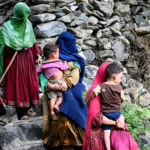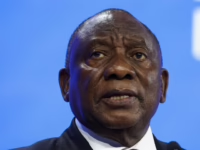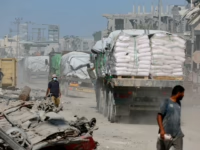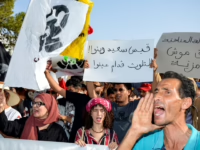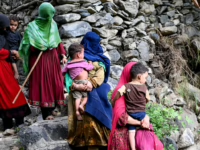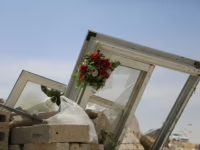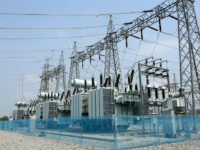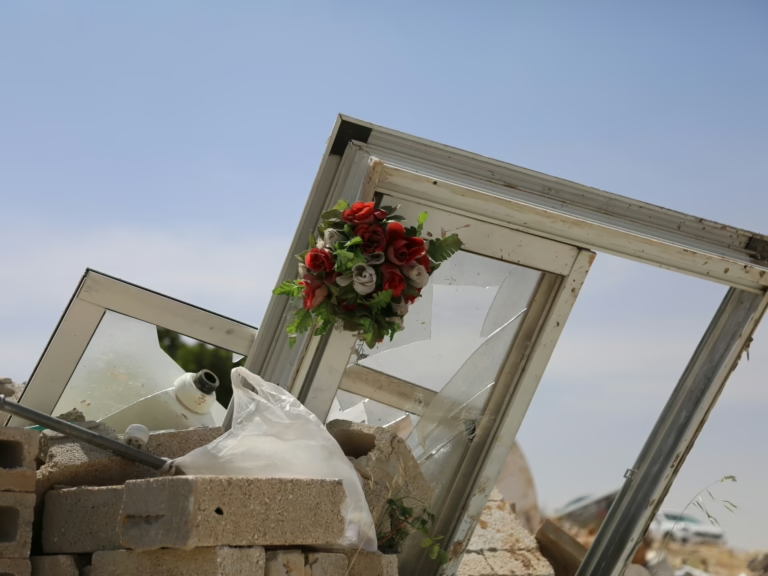Khallet al-Daba, Occupied West Bank – On a Monday morning in May, at precisely nine o’clock, the peaceful atmosphere of Khallet al-Daba was abruptly disrupted by the rumble of bulldozers and demolition machinery. Israeli soldiers accompanied the vehicles, entering the village and forcibly evicting families from their homes while herding livestock into the open fields.
By the close of May 5, this small settlement nestled in the heart of Masafer Yatta lay in ruins. This event marked one of at least four large-scale demolitions carried out by Israeli forces throughout the year. For the villagers, these repeated destructions represent a “new Nakba,” evoking the traumatic displacement and ethnic cleansing Palestinians endured in 1948.
During the demolitions, locals reported that dozens of military vehicles, including armored carriers and jeeps, encircled the village. Under the scorching sun, women clutching infants, men still stunned from the sudden eviction, and frightened children stood for six hours as their homes were reduced to debris.
In the aftermath, families have struggled to rebuild their lives. Some have taken refuge in underground caves, which were excavated years ago as emergency shelters. Others have squeezed into fragile tents, ill-equipped to endure the extremes of summer heat and winter cold.
Mohammed Rabia, head of the nearby at-Tuwani village council and an advocate for Bedouin communities across Masafer Yatta, lamented, “This demolition severed Khallet al-Daba’s essential services: water supply, electricity, solar panels, drinking wells, sewage systems, and even street lighting. We have been thrust back into a primitive existence, living in caves and tents without basic necessities… yet no one has abandoned the village.”
Military Training Zones and Displacement
Khallet al-Daba is situated centrally within Masafer Yatta, a collection of 12 Palestinian villages scattered across the rolling hills south of Hebron in the southern West Bank.
While the United Nations estimates the population of Masafer Yatta at around 1,150, Rabia asserts the actual figure is closer to 4,500. The community primarily depends on sheep herding and cultivating wheat and barley, which form the backbone of their local economy.
However, roughly 20% of West Bank land, including parts of Masafer Yatta, was designated by Israel as a military training area-known as ‘Firing Zone 918’-in the 1980s. Since then, Israeli authorities have sought to clear Palestinians from this territory.
The Israeli military defended the May 5 demolition by citing the village’s location within this military zone.
Research by the Israeli-Palestinian group Akevot uncovered that the strategy of declaring military training zones was proposed in 1981 by Ariel Sharon, then Agriculture Minister and later Prime Minister, as a means to displace Palestinian residents.
Homes in this region face repeated demolitions under military orders. The official reasons vary-from unauthorized construction to proximity to military zones or land claimed for settlement expansion-but the underlying objective remains consistent: forced displacement.
Frederieke van Dongen, humanitarian affairs manager at Doctors Without Borders (MSF), recently stated that Israel’s actions in Masafer Yatta are “part of a wider policy of ethnic cleansing, aimed at forcibly transferring Palestinians from the area.”

“If I Leave, I Will Perish”
Among those who witnessed the destruction of their homes this spring was 65-year-old Samiha Muhammad al-Dababseh, a lifelong resident and mother of eight. Her face, marked by years of hardship, reflects the weight of her experiences.
“I shouted, ‘The army is here!'” she recounted. “Within moments, soldiers stormed our homes, forcibly evicting us without allowing us to take anything-not even food or clothing. They shoved me harshly and declared, ‘This is not your land. You will have no home or shelter left.'”
Samiha’s family had already endured three demolitions before May. After their stone house was razed, they returned to a cave that Samiha and her late husband had painstakingly dug and converted into a refuge. Women and children slept inside, while the men rested outside its entrance.
Tragically, on September 17, Israeli forces demolished even this cave, along with tents, water tanks, and mobile toilets, according to villagers.
“If even a single tree remains in Khallet al-Daba, I will stay beneath its shade,” Samiha declared. “This land is my soul. Leaving it would mean death.”
Now, Samiha lives under a tree. “We constantly fear attacks from settlers,” she said. “Despite everything, we refuse to abandon our home.”

Enduring Life Amidst Fear
Samiha’s youngest son, 31-year-old Mujahid al-Dababseh, shares a cave with his wife, three children, and eleven other relatives. The farmer describes the nights as long and filled with anxiety.
“The children are haunted by nightmares of bulldozers and settler violence,” he said. “I worry about threats from snakes, insects, or dehydration due to the lack of water. Our existence is harsh-no electricity, no food, no security.”
Mujahid recalls helping his father lay stones when building their home. Watching it crumble felt like losing a vital part of his life.
“The occupation has transformed Khallet al-Daba into a second Gaza-everything above ground has been obliterated, leaving only ruins,” Mujahid said. “But they have failed. No Palestinian child here will ever be forced to leave.”
The village, home to approximately 120 people-one-third of whom are children-all belong to the extended Dababseh family. Its name is derived from the Arabic word for hyenas (daba), which once roamed the valleys. Today, residents say, it is settlers and soldiers who prowl their lands.
For many, the demolitions represent more than the loss of homes-they signify an attempt to erase life itself, destroying water wells, solar panels, sewage systems, and streetlights. Each time, the community rebuilds what they can and reaffirms their determination to stay.
Khallet al-Daba now stands as a mosaic of caves, rubble, and tents, symbolizing Palestinian resilience in a struggle spanning over seventy years.
“This is a continuing Nakba,” Rabia said. “Yet the people have chosen to resist by remaining. Four times their homes have fallen. Four times, they have stayed.”



